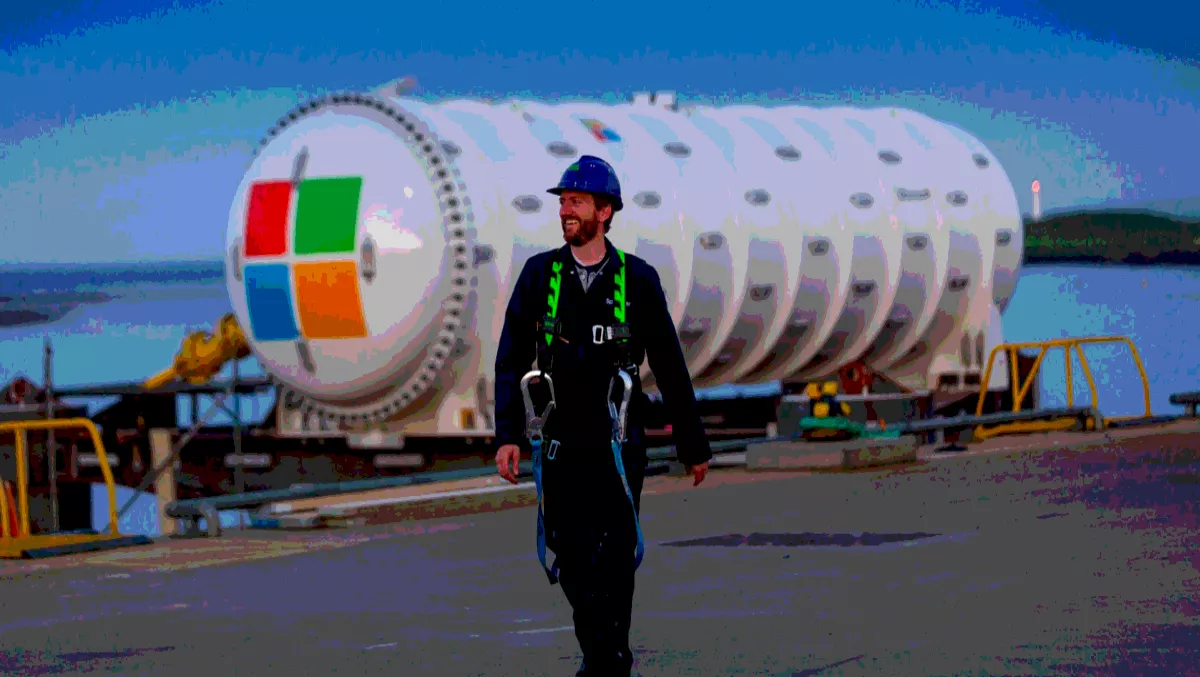
Microsoft launches ground-breaking undersea data centre in Scotland
Leveraging technology from submarines, Microsoft has launched an incredible self-sufficient underwater data center that is the culmination of around four years' work.
The facility is the size of a standard shipping container and is now processing workloads on the seafloor near Scotland's Orkney Islands.
Microsoft AI and Research corporate vice president and leader of the New Experiences and Technologies group Peter Lee says the project has involved a set of crazy demands to make in pursuing what Microsoft CEO Satya Nadella calls 'relevant moonshots' with the potential to transform the core of Microsoft's business and the computer technology industry as a whole.
Titled Project Natick, the out-of-the-box idea is a bid to accommodate for exponential growth in demand for cloud computing infrastructure near population centres, as according to Microsoft, more than half of the world's population lives within 120 miles of the coast. With data centers in bodies of water close to coastal communities, data would have a short distance to travel.
"For true delivery of AI, we are really cloud dependent today," says Lee.
"If we can be within one internet hop of everyone, then it not only benefits our products, but also the products our customers serve.
Built in France, deployed in ScotlandThe 40-foot long Northern Isles data center is loaded with 12 racks containing a total of 864 servers and associated cooling system infrastructure.
Assembled and tested in France with the help of project partner Naval Group, a 400-year old company with global expertise in engineering, manufacturing, and maintaining military-grade ships and submarines as well as marine energy technologies, the data center was then shipped on a flatbed truck to Scotland where it was attached to a ballast-filled triangular base for deployment on the seabed.
The most complex task of launch – and stressful for those involved – was the foot-by-foot lowering of the data center and cable to the rock slab seafloor, which involved 10 winches, a crane, a gantry barge and remotely operated vehicle that accompanied the data center downwards.
Leader of Microsoft's Project Natick team Ben Cutler says everything learned from the deployment and over the next year will be invaluable.
"We know if we can put something in here and it survives, we are good for just about any place we want to go," says Cutler.
Renewable the way to goThe European Marine Energy Centre is a test site that runs experimental tidal turbines and wave energy converters that generate electricity from the movement of seawater. Onshore, wind turbines pepper the fields of farmers while solar panels adorn the roofs of centuries-old homes, combining to generate more than enough energy for the islands' 10,000 residents.
A cable from the Orkney Island grid sends electricity to the data center – which needs just under a quarter of a megawatt of power when running at full capacity.
Colocation with marine renewable energy is a step towards reaching Microsoft's vision of data centers with their own sustainable power supply says Microsoft cloud infrastructure strategy and architecture general manager Christian Belady.
"Energy self-sufficient data centers could be deployed anywhere within reach of a data pipe, bringing Azure cloud services, for example, to regions of the world with unreliable electricity, and eliminate the need for costly backup generators in case of power grid failures," says Belady.
"Our vision is to be able to deploy compute rapidly anywhere on the planet as needed by our customers.
And in terms of cooling, Naval Group adapted a heat-exchange process used for cooling submarines, whereby seawater is piped directly through the radiators on the back of each of the 12 server racks and back out into the ocean.
The depths of the ocean are consistently cold, thereby offering ready and free access to cooling – eliminating one of the biggest costs of land-based data centers.
Studies from phase 1 of the project assured Microsoft staff that water from the data center rapidly mixes and dissipates in the surrounding currents.
What lies aheadOver the coming 12 months the Project Natick team will monitor and record the performance of the data center to keep tabs on everything from power consumption and internal humidity to sound and temperature levels.
Cutler says data centers are the physical clouds of cloud computing and given its rapid rise, they need to innovate rapidly.
"When you are in this kind of exponential growth curve, it tells you that most of the datacenters that we'll ever build we haven't built yet," says Cutler.
Lee says that when you go for a moonshot, you might not get to the moon - but that doesn't matter.
"It is great if you do, but, regardless, you learn a lot and there are unexpected spinoffs along the way. You get Velcro at some point. That is happening in this case. We are learning about disk failures, about rack design, about the mechanical engineering of cooling systems and those things will feedback into our normal data centers," Lee concludes.

